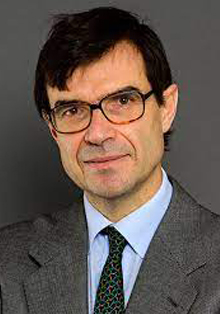Pedro González
Journalist
Pyrrhic victory for the Cuban dictatorship in preventing the march for change on 15 November. The colossal police deployment, threats and coercion frustrated the vision of the evident unease of a population that the Castro dictatorship has long since been unable to convince of the supposed goodness of an ever-pending revolution. Yes, the repressive apparatus of the Cuban police state did not allow its own constitution, which guarantees the exercise of freedom of expression, to be enforced. A dead letter, as in all regimes where daily terror replaces proclamations and even belies its own apparently progressive laws.
The date of 15 November will nevertheless mark a before and an after. Despite the prevailing misery on the island, no means were spared and every resource was mobilised to prevent the leaders of the demonstration from even being heard, even through the slits in the shutters of their modest homes, which were covered with a profusion of flags and all kinds of visual obstacles. Confinements, imprisonment and occasional interrogations, acts of repudiation or escraches have been everything the regime has imagined to contravene the supposed right to freedom of expression. And, of course, the usual counter-demonstrations of unconditional support for the regime have enjoyed not only full official protection but also the coercive force of Castro’s top brass. Cuba’s president himself, Miguel Díaz Canel, joined one of these sit-ins to try to stage the people’s support.
But, having seen and proven that all the Cuban Communist Party (PCC) can offer is nothing more than hunger and terror after six decades, it seems clear that its model is finished. After 15N it has only two alternatives: liberalisation or more repression and terror. If it opts for the former, it will accelerate the spiral towards the retirement of the most immobile gerontocracy. Opting for the latter will lead to an even more dramatic retreat for Cubans. The regime will nevertheless try to prolong itself as long as possible so that the children and heirs of its leaders can adapt to an eventual major political change.
A silver bridge for the fleeing enemy, or a covert mission?
For the time being, the leader of the Archipiélago platform, playwright Yunior García, was not imprisoned this time but allowed to leave Cuba, with the approval of Spain, which gave him the corresponding visa. He has barely set foot on Spanish soil and has declared that he “does not know why he was allowed to leave” the island. And, although he remains discreet about where he has taken refuge, he expressed his “idea of returning once I have fulfilled my task that Cuba is for all Cubans”.
With such information in hand, it could be deduced that the Castro regime is using him to forge some kind of pact with the exile community that would open its rusty shutters. And that these alleged multiparty negotiations were held discreetly on Spanish soil and with Spanish diplomatic mediation.
If this were the case, the move could be hailed as a step towards a change that would certify the definitive demise of Castroism. A peaceful transition is, of course, desirable, but the Castro regime itself is well aware that the children of Cubans, disenchanted with the revolution but resigned, do not want to live and languish like their parents.
It will not be easy, of course. Castroism has already shown repeated signs of re-tightening the screws after promising some liberalisation. They suspect that letting in a breath of fresh air will eventually bring the winds of freedom, of which they are terrified. But there seems to be no alternative to real openness, otherwise confrontation will be inevitable, encouraged as always by the foreign superpowers who would once again settle their differences by urging Cubans to kill each other.
© This article was originally published in Atalayar / All rights reserved.






